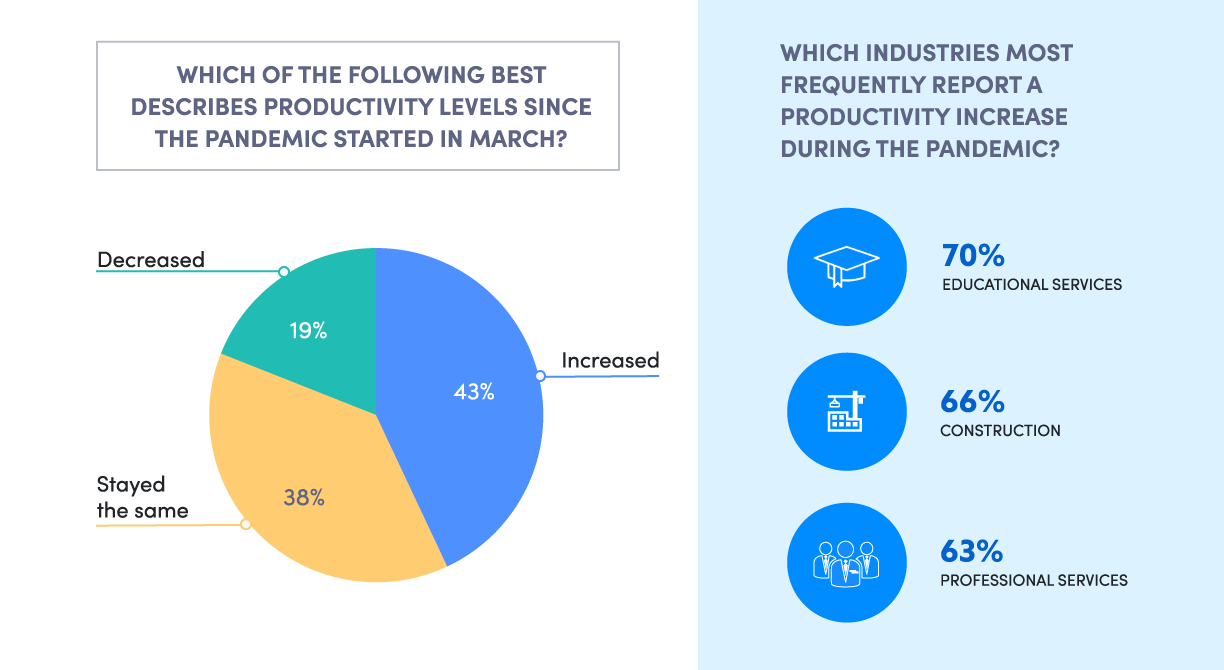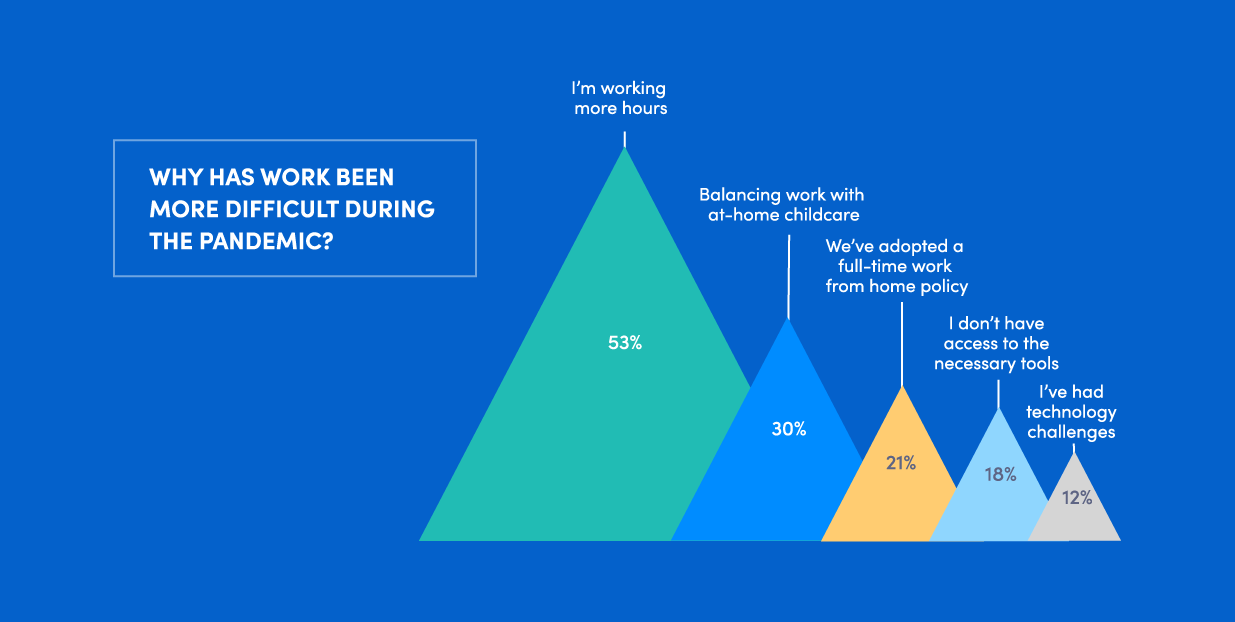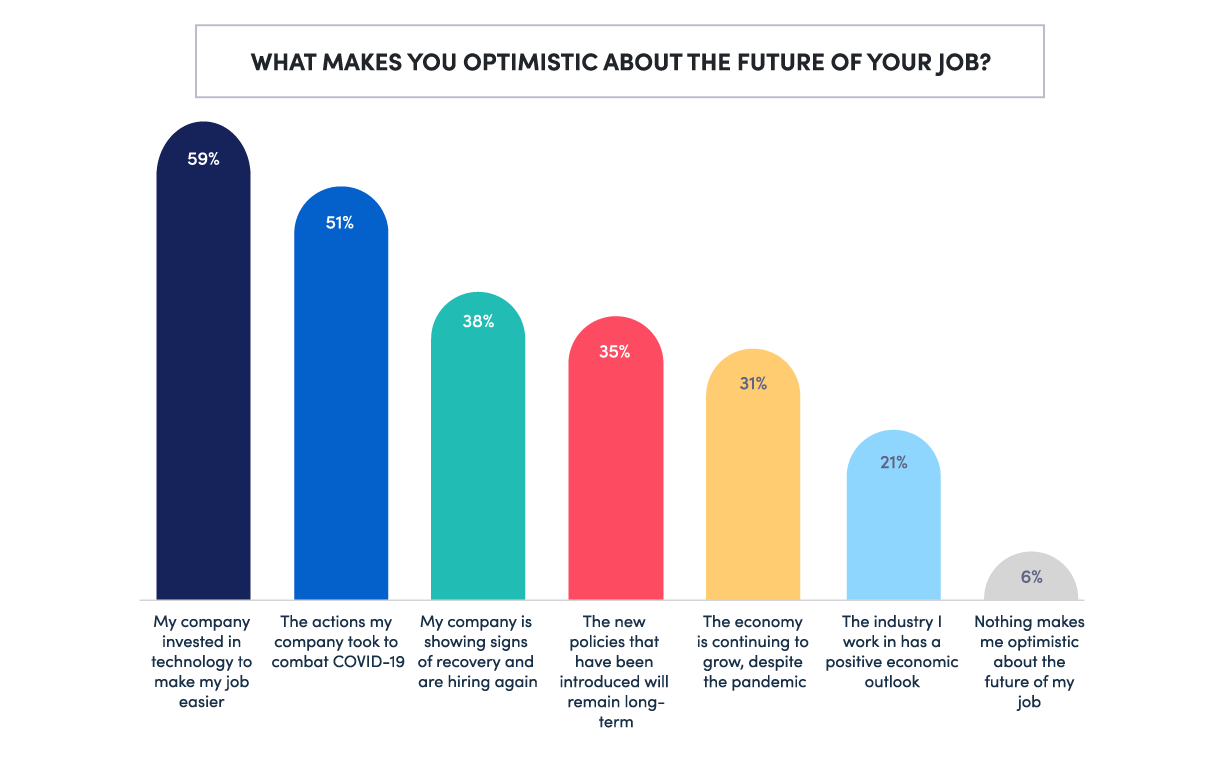Deskless workers have been more productive thanks to new tools
Right now, half of all organizations claim deskless workers make up more than 10% of their total workforce.
As executives at these companies combat the effects of COVID-19, 85% believe their leadership team has successfully limited their deskless workers’ exposure to the virus, and 88% say they’ve implemented effective tools to help their field staff during this time.
The top tools these technology leaders have provided deskless teams with to combat pandemic-related challenges are those that enable staff to have virtual customer appointments (75%), message other internal staff (72%), and schedule appointments (63%).
As a result of these new tools, most technology executives say their teams’ productivity level has increased (43%)—or at least stayed the same (38%)—despite the pandemic.
Work has been harder for executives as they enable deskless teams
More than two thirds (70%) of technology executives say work has been harder over the past several months.
Of the leaders who claim work has been more challenging, their top struggles are increased working hours (53%) and balancing work with at-home childcare (30%).
In fact, more than half (59%) of all the technology executives surveyed say their working hours have increased since March as they combat pandemic-related challenges, and work to enable remote teams and support deskless staff.
Despite work being more difficult, job satisfaction hasn’t dwindled
While technology executives are working longer hours and struggling with new challenges, more than half (57%) say the pandemic hasn’t negatively impacted their job satisfaction.
Of the 43% of leaders who have experienced a job satisfaction setback during this time, most cite a heavier workload due to reduced head count (28%).
In addition to steady job satisfaction, 94% of tech leaders are optimistic about the future of their job—the top reason being their company’s investment in tools to make work easier (59%).





